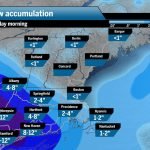GREATER BOSTON’S homeless population is on the rise, with the second highest rate of homelessness among 45 large US cities, but a new report finds the Boston region is doing a better job of providing shelter than most of the comparable cities.
With families, not single individuals, accounting for most of the region’s unhoused people and rates of homelessness higher for Black and Latino residents, recent changes to the state’s shelter policy could impact both the number of people experiencing homelessness in the state and their access to temporary shelters.
But, Schuster cautioned, homelessness is tied tightly to housing access.
“There’s almost no lower cost housing available in our region for people who earn low incomes, or who aren’t working,” he said. “Regions that pair high demand with exclusionary zoning rules only allowing for expensive housing to get built end up creating problems like this.”
Greater Boston has an estimated 801 unhoused people per 100,000 residents, according to the report conducted by Boston Indicators, the research arm of The Boston Foundation. Only New York City, with 1,056 homeless per 100,000 residents, had a higher rate of unhoused people than Boston. Both New York and Massachusetts have some version of a “right to shelter,” so the rate of housed homelessness in Boston reflects that obligation.
Based on counts conducted by local planning bodies, the Boston Indicators report found Greater Boston’s homelessness rate spiked about 27 percent between 2022 and 2023. During the pandemic’s earlier years, report co-author Kelly Harrington said, homelessness rates dropped in the region in part because of emergency regulations offering benefits to low-income families and incomplete counts of unhoused people.
Greater Boston has some significant positives when it comes to homelessness supports, the report authors noted. Organizations like Pine Street Inn are national models for shelter care. Just six percent of unhoused people in Greater Boston lacked shelter in 2023, and the region’s rate of chronic homelessness is less than half the national rate.
But the housing market pressures are creating challenges even for those with shelter, the report found. Residential overcrowding, a measure of extreme housing instability, is up 55 percent since 2006.
“So while the fact that Greater Boston has low rates of chronic and unsheltered homelessness is relatively positive news,” Harrington said, “it’s undeniable that too many people experience homelessness in Greater Boston and far better would be if all those people had access to decent housing on their own terms.”
Massachusetts’ right-to-shelter law, the report authors noted, has traditionally guaranteed shelter for families with children and pregnant women. In the face of increased shelter demand tied to large numbers of immigrant families in need of emergency housing, the Healey administration imposed new restrictions that went into effect August 1.
“These changes don’t directly target immigrants,” Harrington said, “but they clearly prioritize longer standing Massachusetts residents over new arrivals. So while this is not a complete rollback of the right to shelter law we know that these new restrictions have forced many more families to spend nights on the street with no other options, and will inevitably lead to increases in the rate of unsheltered homelessness in Greater Boston.”
Many of the unhoused families in Greater Boston are recent immigrants, the report notes. Black residents are far more likely to experience homelessness in the region than people of other races, which researchers attribute in part to large numbers of Haitian refugees fleeing political and economic instability in their home country.
While Black residents make up only eight percent of Greater Boston’s total population, they account for over half of its unhoused population, according to the report. That families comprise most of the unhoused people in greater Boston means young people under 18 years of age experience homelessness at much higher rates than other groups.
The picture could worsen, according to the report. Authors cited national reporting indicating that 76 percent of K-12 students without permanent housing live in overcrowded housing, “meaning there are likely many more children and youth under 18 living on the brink of homelessness.”
It all circles back to the severe housing crunch, researchers said. Rental vacancies are stuck well below the level of a healthy system, housing prices continue to rise, and zoning persists that limits deeply affordable or multi-family housing in many Massachusetts regions.
Advocates this week cheered the signing of a $5-plus billion housing bond bill, but the amount of units produced will depend on specific state investments, local cooperation with rezoning, and the difficult construction market.
“Even with the recent rolling back of some key provisions of this law – and these rollbacks are very real – we still have done more than almost anywhere else in the country,” Schuster said. “It’s good that, in the context of such a wealthy region, we’ve been relatively humane and provided shelter to many in need. In so many other ways, especially in terms of housing policy, we’ve pulled up the bridge behind us.”











